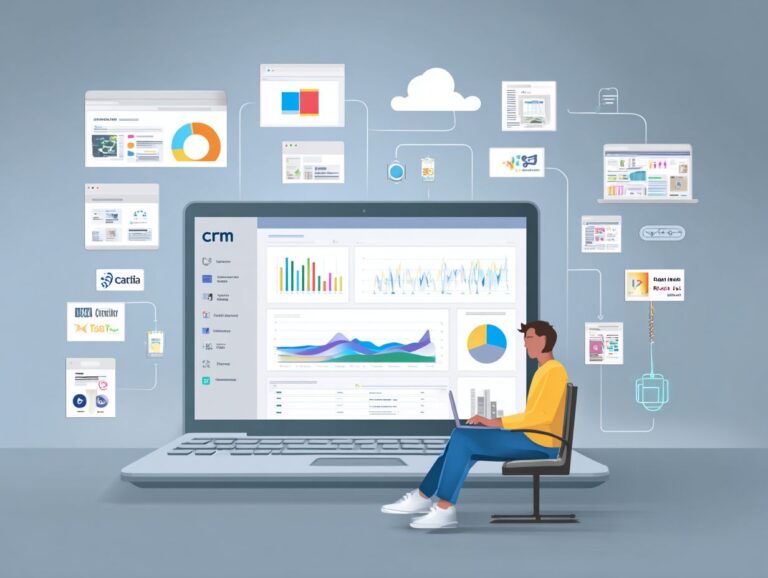Sales Email Flow Integration: Benefits and How It Works
Integrating sales email flow can greatly improve your marketing strategy. By using systems that automatically send emails based on what customers do-such as a welcome email for new subscribers or follow-up emails for customers who left items in their cart-you can make the process smoother and keep customers interested. In this article, we’ll look at the advantages of using email sequences, how they function, and key elements to improve your newsletter campaigns. Prepare to improve your email marketing!
Key Takeaways:
- Sales email flow integration makes the sales process smoother and saves time and effort.
- Adding email updates in sales increases customer involvement and helps make decisions based on data.
- The key components of sales email flow are automation tools and CRM systems.
- Benefits of Sales Email Flow Integration
- Key Components of Sales Email Flow
- How Sales Email Flow Integration Works
- Best Practices for Implementation
- Common Challenges and Solutions
- Frequently Asked Questions
- 1. What is Sales Email Flow Integration and how does it work?
- 2. What are the benefits of using Sales Email Flow Integration?
- 3. How can Sales Email Flow Integration improve my sales team’s performance?
- 4. Are there any specific tools or systems that Sales Email Flow Integration can work with?
- 5. How easy is it to set up Sales Email Flow Integration?
- 6. Can I customize Sales Email Flow Integration to fit my specific business needs?
Benefits of Sales Email Flow Integration
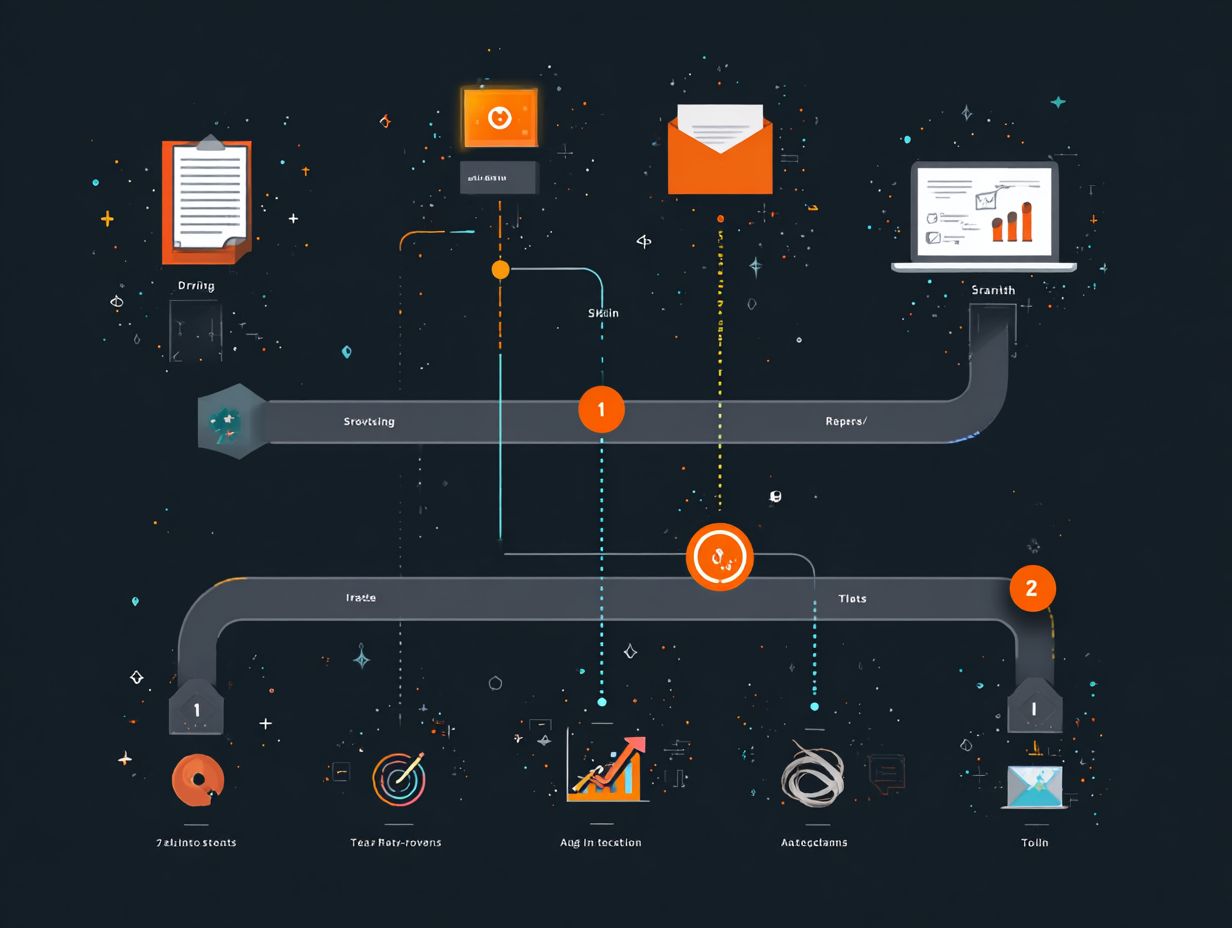
Setting up sales email sequences can increase conversion rates by 25% and make customer interactions better by using scheduled, action-based messages. For those looking to maximize these benefits, understanding CRM integration best practices can provide valuable insights on seamless implementation and enhanced efficiency.
1. Improved Efficiency
Sales email flows can reduce the time spent on marketing campaigns by up to 50%, allowing teams to focus on strategy rather than execution. With ActiveCampaign, you can set up automatic processes to connect with new leads.
Start by setting up an automatic welcome email sequence triggered when someone subscribes to your newsletter. Afterward, another set of messages can grow these leads by providing specific content that relates to their interactions over time, like product news or customized deals.
This ensures communication remains clear, allowing your team to concentrate on developing larger marketing strategies, which increases productivity.
2. Enhanced Customer Engagement
Changing email content to fit what users like can make more people open them by over 20%, leading to stronger connections with customers. To improve email interaction, use methods like sorting your audience based on age, previous purchases, or how they engage with your content.
For instance, if a segment consists of frequent buyers, tailor emails featuring loyalty rewards or exclusive offers relevant to their previous purchases.
Tools like Mailchimp and HubSpot provide strong options for dividing your audience into groups and testing different versions of your emails. Brands like Amazon increase sales by suggesting products to customers based on what they have looked at before.
By using these specific methods, you can develop effective email content that encourages people to take action. This approach aligns with the principles outlined in our analysis of effective customer experience marketing.
3. Data-Driven Insights
Using data analytics tools helps marketers monitor engagement numbers successfully, resulting in useful information and better plans.
Marketers can improve their email campaigns by concentrating on important measurements like open rates, click-through rates (CTR), and conversion rates. For example, integrating Google Analytics with tools like Mailchimp or HubSpot enables users to monitor user behavior after an email interaction.
If you notice low open rates, consider A/B testing subject lines or send times. Meanwhile, high CTR but low conversion may suggest the need for clearer calls-to-action or landing page optimization. This approach improves each campaign gradually, resulting in better outcomes.
Key Components of Sales Email Flow
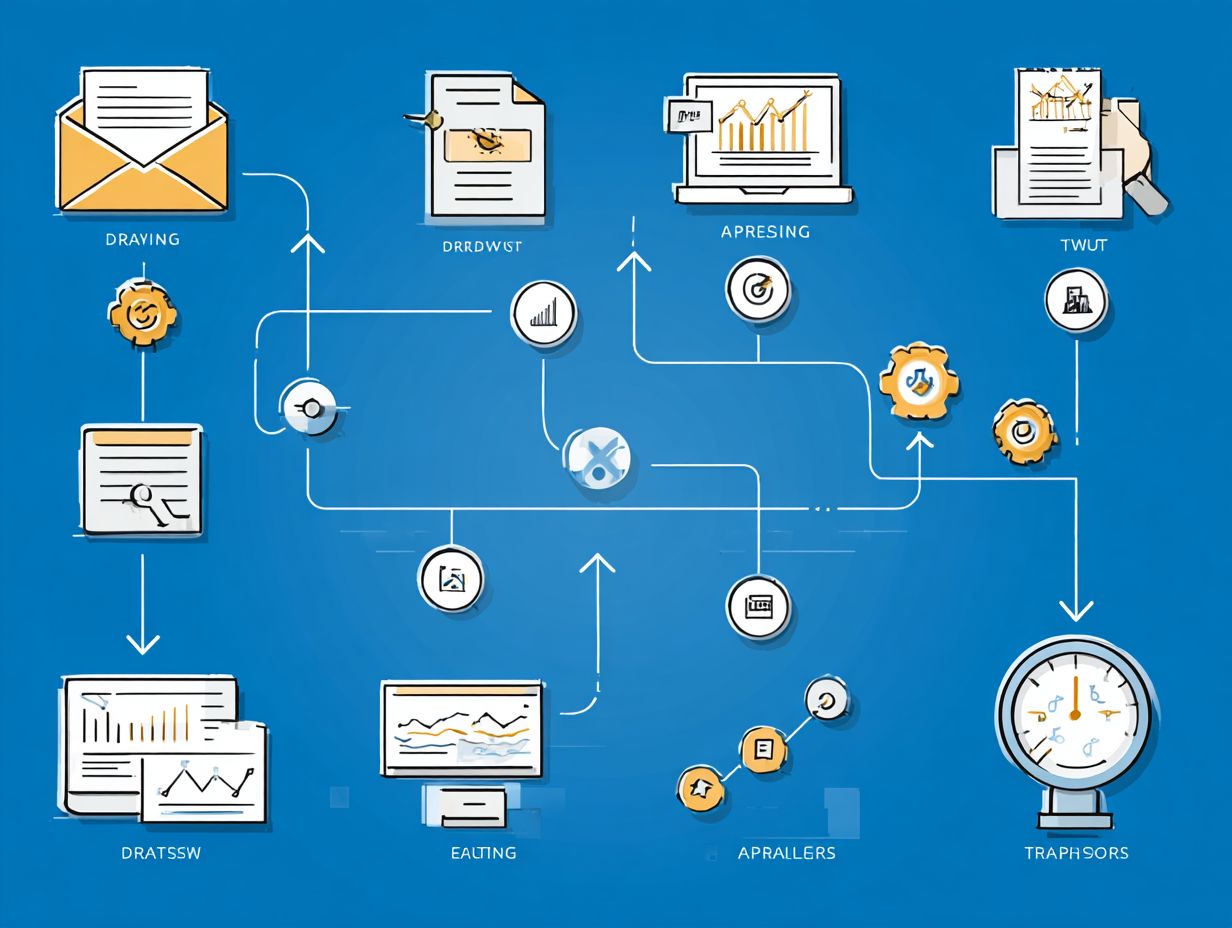
A good sales email sequence depends on important elements, like strong email tools and good systems for managing customer relationships. Effective management can be enhanced by leveraging CRM data integration tools, which streamline processes and improve communication.
1. Email Automation Tools
Tools like ActiveCampaign and Mailchimp offer detailed email automation features that can make managing campaigns easier and help increase interaction.
A quick comparison of popular email automation tools reveals significant differences in pricing and functionality. Here’s a brief table:
| Tool Name | Price | Key Features | Best For |
|---|---|---|---|
| ActiveCampaign | $9/mo | Predictive sending, CRM | Advanced users |
| Mailchimp | Free-$299 | Audience segmentation, templates | Small businesses |
| HubSpot | Free-$50/mo | Marketing Hub, analytics | Growing companies |
ActiveCampaign is known for its features such as predicting the best time to send emails, adjusting send times based on user actions, and customizing email content for each person, making it great for advanced marketing plans.
2. Customer Relationship Management (CRM) Systems
Connecting CRM systems such as Salesforce or Zoho with email automation tools improves how businesses handle customer interactions and customize emails. This integration allows businesses to segment their contacts effectively and send targeted campaigns.
Using Salesforce together with Mailchimp lets you set up automatic processes. For example, it can send follow-up emails when someone makes a purchase.
Zoho integrates smoothly with ActiveCampaign, allowing for easy creation of drip campaigns to nurture leads over time. Using features like content that changes based on CRM data makes sure the right messages reach the right people, which greatly improves engagement rates.
How Sales Email Flow Integration Works
Knowing how to connect sales emails properly is important to make them most effective in getting customers to act and make purchases. For an extensive analysis of this trend, our comprehensive study of choosing integration tools for CRM examines key considerations for aligning tools with business goals.
1. Setting Up Email Campaigns
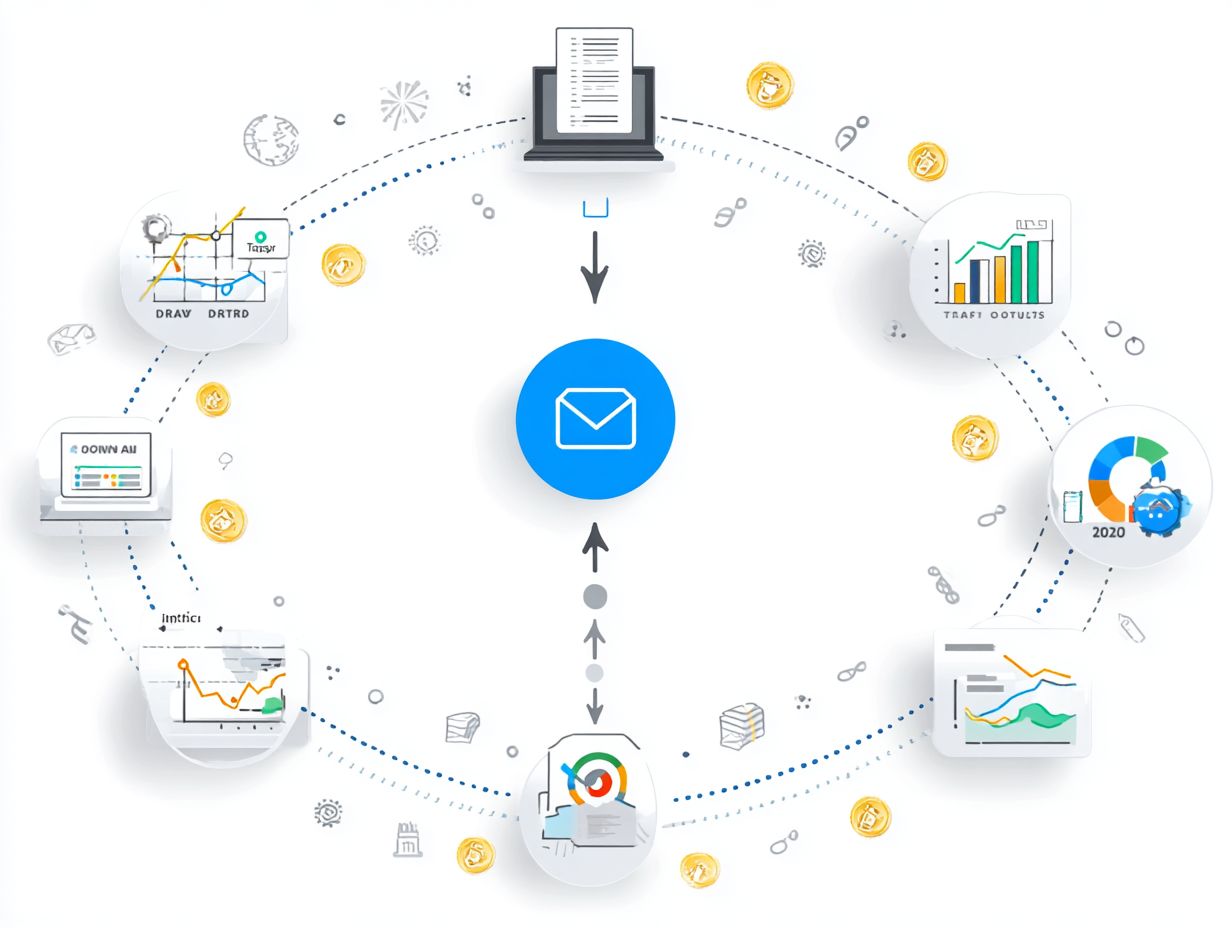
Creating successful email campaigns requires organizing specific email plans that match the customer’s experience.
- Begin by defining specific objectives for your campaign, such as increasing engagement or driving sales, which can take about 1-2 hours.
- To start, divide your audience based on their age, previous buying habits, or how much they interact with your brand. This will make your approach more relevant and can be done in about an hour.
- Make your emails more personal by using automatic fields to adjust the message for each recipient. For instance, a retail campaign might highlight products based on a customer’s previous interests.
- You should expect to invest 3-4 hours in this setup.
2. Tracking and Analyzing Performance
Regularly checking and studying email results is important for bettering upcoming campaigns and increasing customer interaction. Key metrics to monitor include open rates, click-through rates (CTR), and conversion rates.
Open rates tell you how many people were interested in your subject line, while CTR shows how well your email content encourages people to take action. Use tools like Google Analytics for detailed tracking along with your email platform dashboards.
For instance, if a campaign has a low click-through rate but many people are opening it, you might need to adjust your message or what you’re offering. Checking these numbers often can help improve your content plan and increase interaction gradually.
Best Practices for Implementation
Applying effective tactics in email marketing can greatly improve the impact of sales email series, resulting in increased customer interaction and more conversions.
To maximize your sales email flows, focus on three key practices:
- Clear out your email list by removing subscribers who don’t engage, which can improve how often your emails reach inboxes.
- Try different subject lines to see which ones connect more effectively with your audience, resulting in higher open rates.
- Tailor your content by dividing your audience according to their buying habits or preferences.
For example, research with Company X showed a 25% increase in sales after switching to customized emails. This shows how effective customized messages can be.
Common Challenges and Solutions
Despite the benefits, businesses may encounter challenges during sales email flow integration that require strategic solutions.
Common issues include low engagement rates, which can often be improved by personalizing email content. For instance, one effective strategy is segmenting your audience based on past interactions and interests, as seen with brands like Nike, which tailors offers to different customer segments.
Technical integration problems can also arise, particularly when syncing CRM systems with email marketing platforms. To resolve this, consider using tools like Zapier or Integromat, which facilitate seamless automation between your software, ensuring a smoother flow of information. Worth exploring: CRM Integration: Challenges, Solutions, and Strategies which provides in-depth insights on this topic.
Frequently Asked Questions
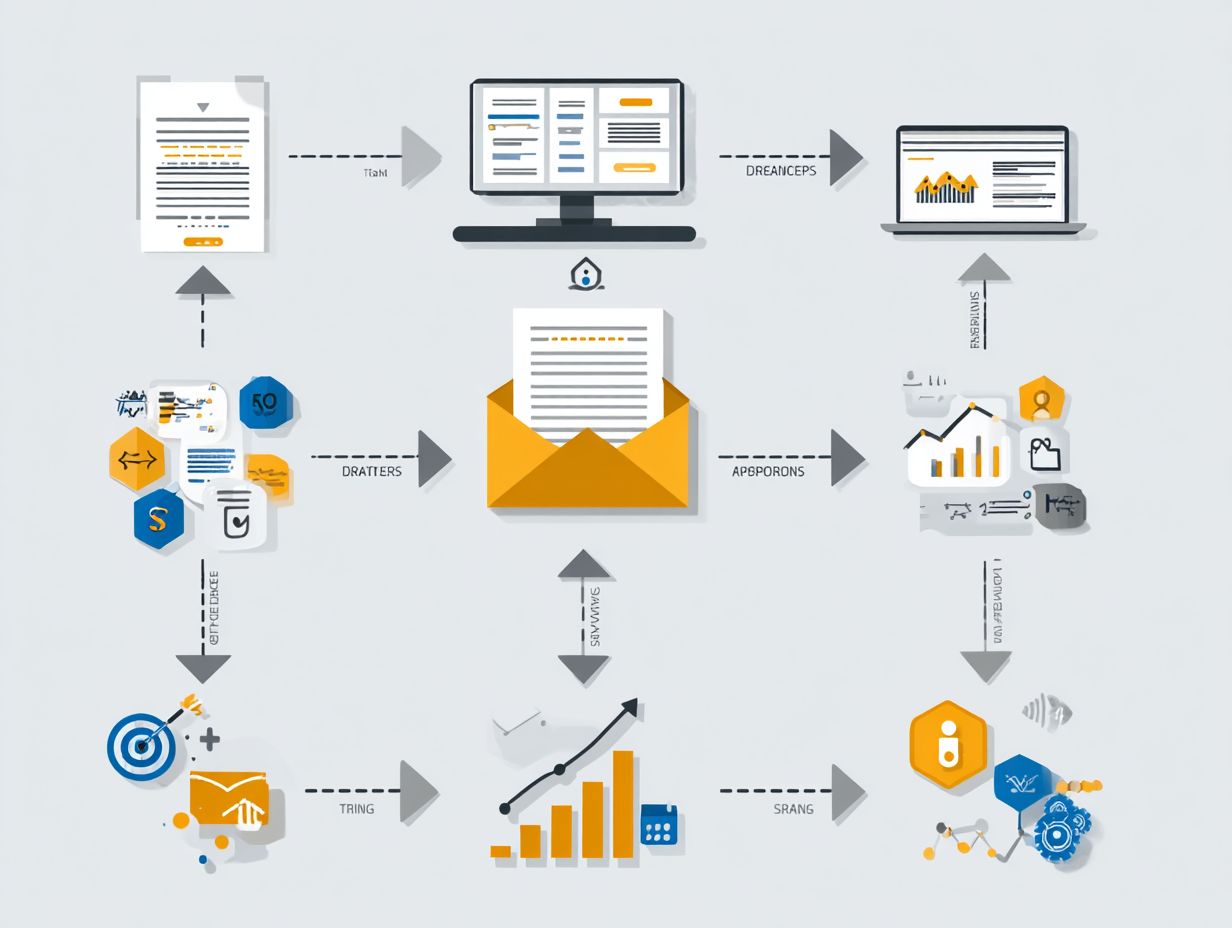
1. What is Sales Email Flow Integration and how does it work?
Sales Email Flow Integration is a process that links your sales email platform with other tools and systems to handle tasks automatically and make them work better. It works by using APIs and integrations to seamlessly transfer data and trigger actions between different tools.
2. What are the benefits of using Sales Email Flow Integration?
Using Sales Email Flow Integration has many advantages, such as boosting productivity, making data more accurate, improving how you communicate with customers, and making processes more efficient. It can also save time and reduce the risk of human error.
3. How can Sales Email Flow Integration improve my sales team’s performance?
By automating repetitive tasks and streamlining processes, Sales Email Flow Integration allows your sales team to focus on more important tasks, such as building relationships with customers and closing deals. It gives useful information that can improve sales plans.
4. Are there any specific tools or systems that Sales Email Flow Integration can work with?
Yes, Sales Email Flow Integration can work with a variety of tools and systems, such as customer relationship management (CRM) software, email marketing platforms, project management tools, and more. The specific integrations available will depend on your chosen sales email platform.
5. How easy is it to set up Sales Email Flow Integration?
The ease of setting up Sales Email Flow Integration will depend on the complexity of your chosen integrations and the capabilities of your sales email platform. However, many platforms provide easy-to-use interfaces and assistance to help you establish connections quickly and simply.
6. Can I customize Sales Email Flow Integration to fit my specific business needs?
Yes, Sales Email Flow Integration can be customized to fit your specific business needs. You can pick which tools and systems to connect, set up specific triggers and actions, and change settings so the integration works exactly how you need it to.



